Cones in early spring
Szyszki wczesną wiosną
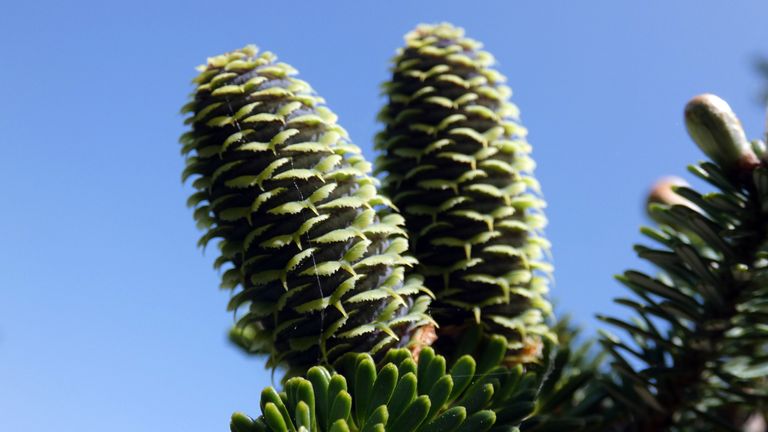
Cones in early summer
Szyszki wczesnym latem

I had the opportunity to see and describe this tree in late autumn and winter. This time I took some photos over the course of a few weeks.
To drzewko miałem już okazję oglądać i opisywać późną jesienią i zimą. Tym razem zrobiłem trochę zdjęć na przestrzeni kilku tygodni.
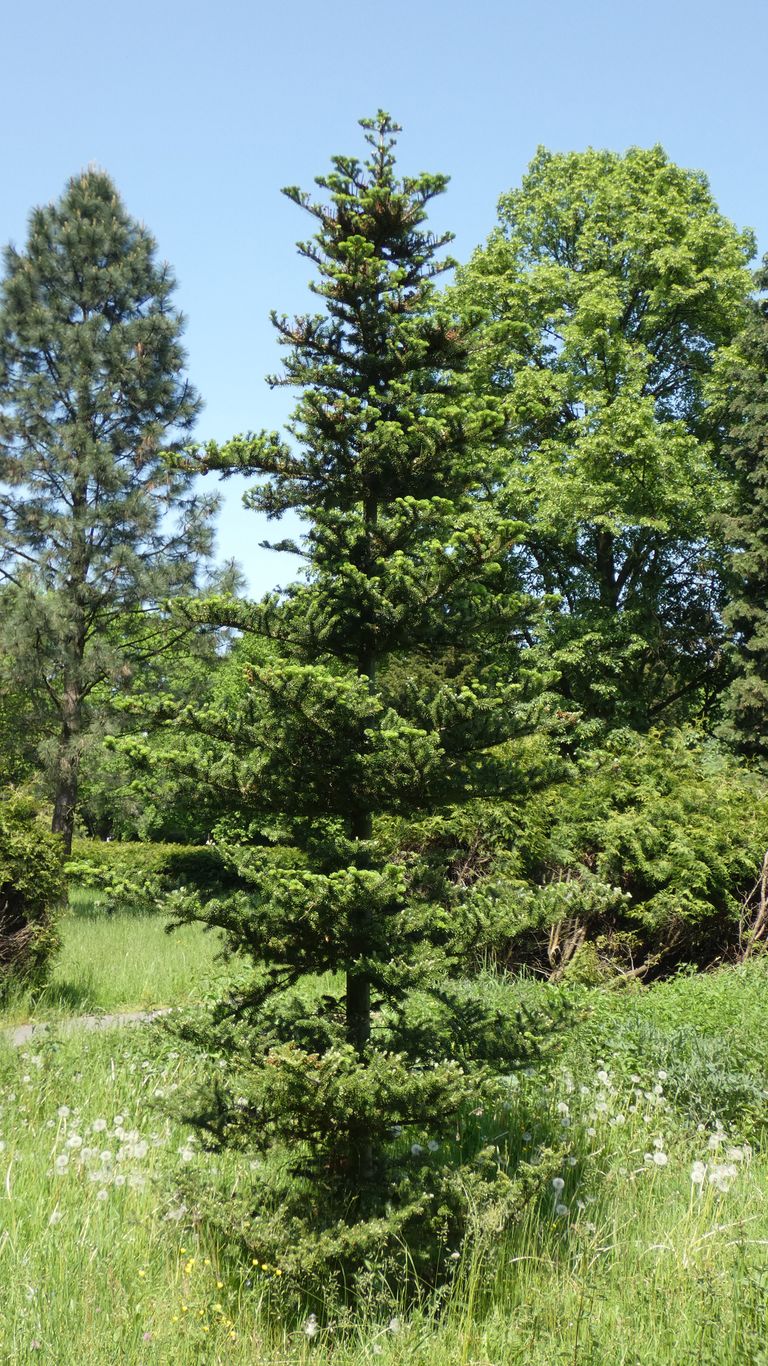 |  |
|---|
 |  |
|---|
More precisely, I took the first photos at the end of April, while the last ones are from mid-June. You can see big changes in the structure of the cones, its colors, and in the structure of the tree itself.
Dokładniej, to pierwsze zdjęcia wykonałem pod konie kwietnia, natomiast ostatnie są z połowy czerwca. Widać duże zmiany w budowie szyszek, jej kolorów, i w budowie samego drzewa.
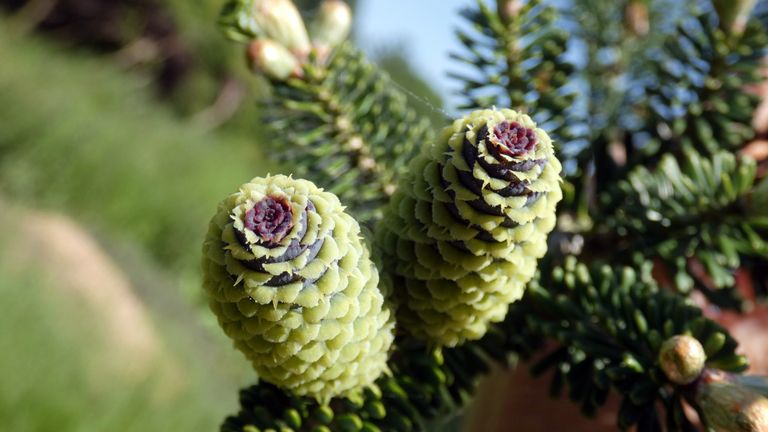
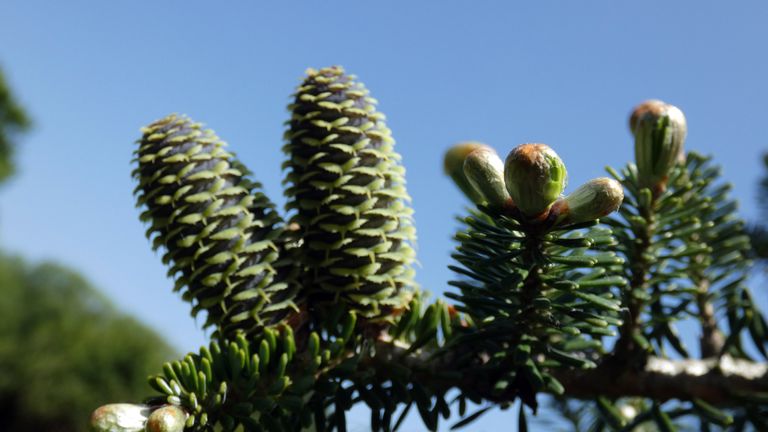


The whole tree has turned green, and the cones change from a beautiful green color to blue, which will turn purple in autumn.
Całe drzewko zazieleniło się, a szyszki z pięknego zielonego koloru zmieniają się w niebieski, który jesienią będzie wręcz fioletowy.
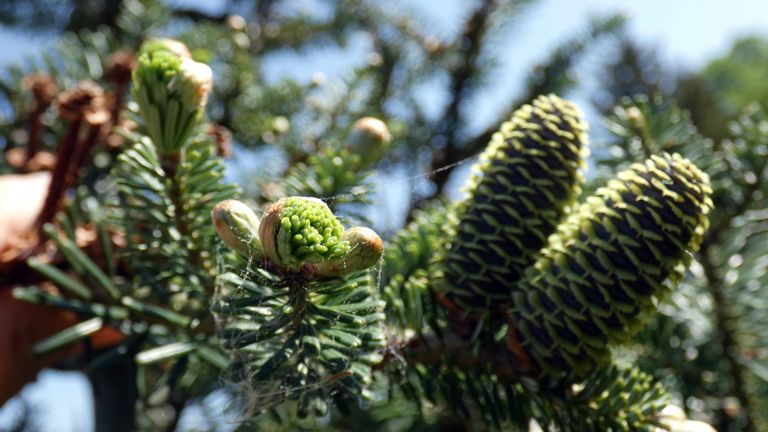
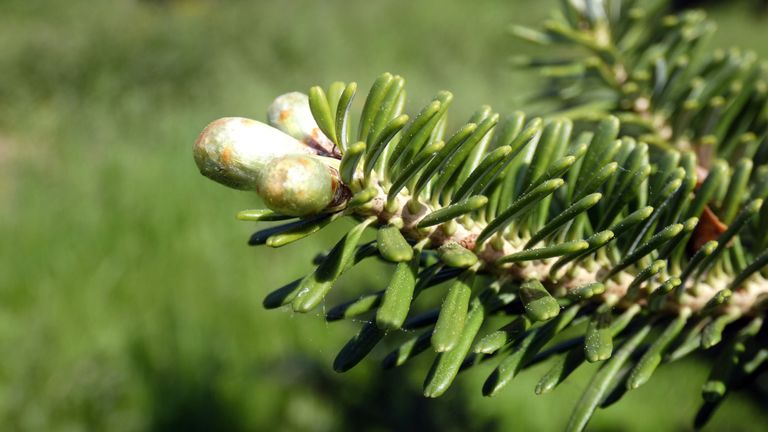

Of course, the phenomenon of this tree, apart from the color of the cones, is the way they grow. Because they don't grow hanging down, they grow up.
Oczywiście fenomenem tego drzewka, poza kolorem szyszek, jest sposób ich wzrostu. Ponieważ nie rosną, zwisając w dół, ale rosną do góry.
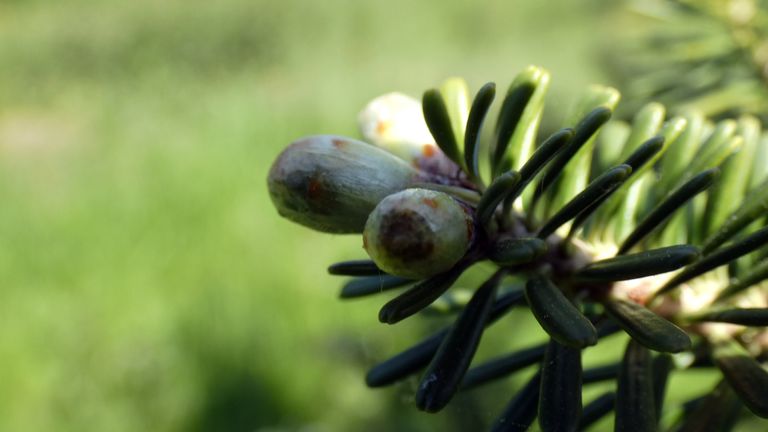
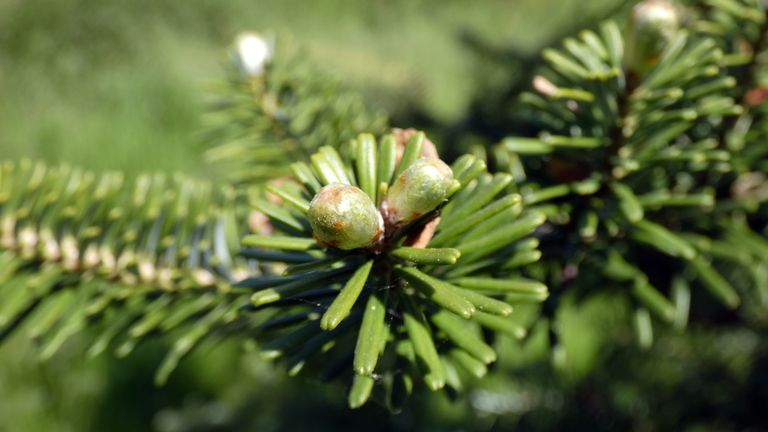
It is a bit like a banana tree, where a bunch of bananas, according to the laws of physics, should hang downwards, but it is not. The banana fruit also grows upwards, and the bunch looks upside down.
Przypomina to trochę drzewo bananowca, gdzie kiść bananów, zgodnie z prawami fizyki powinna zwisać owocami do dołu, a jest inaczej. Owoce banana też rosną do góry, a kiść wygląda na odwróconą.


Korean fir itself is a very attractive, exposed and decorative tree. It grows relatively slowly, because its growth is several centimeters per year and after 10 years it grows up to a maximum of 2 meters in height, which can be seen in spring by young shoots. Pine, for example, can grow up to 50 cm per year.
Jodła koreańska sama w sobie jest bardzo atrakcyjnym, eksponowanym i dekoracyjnym drzewem. Rośnie stosunkowo wolno, bo jej przyrost to kilka centymetrów rocznie i po 10 latach dorasta maksymalnie do 2 metrów wysokości, co widać wiosną po młodych pędach. Sosna natomiast dla przykładu potrafi rosnąć do 50 cm rocznie.
 |  |
|---|
This undoubtedly beautiful and original tree from the mountainous areas of South Korea is also grown in Europe. They can be found in parks, gardens or homesteads.
To niewątpliwie piękne i oryginalne drzewko pochodzące z górzystych terenów Korei Południowej uprawiane jest również w Europie. Można je spotkać w parkach, ogrodach, czy przydomowych posesjach.

My photos already show quite a large tree from the park. It is about 4-5 m high. Assuming the growth rates reported in various sources, this tree can be around 25-30 years old, so it can be considered quite old, but it doesn't look like it.
Moje zdjęcia przedstawiają już dość spore drzewo z parku. Ma około 4-5 m wysokości. Przyjmując tempo wzrostu podawane w różnych źródłach, to drzewko może mieć około 25-30 lat, więc można je uznać z dość wiekowe, ale na takie nie wygląda.

Korean fir is quite capricious, it will not grow anywhere. It needs quite fertile, humus soil and a well-lit position. That is why she found her place in the park, in the rose garden, where plant care is at a fairly high level.
Jodła koreańska jest dość kapryśna, nie będzie rosła byle gdzie. Potrzebuje dość żyznej, próchniczej gleby oraz stanowiska dobrze nasłonecznionego. Dlatego też znalazła swoje miejsce w parku, w ogrodzie różanym, gdzie pielęgnacja roślin stoi na dość wysokim poziomie.


Photo: Panasonic Lumix
© copyright marianomariano
ooh, the squirrels must have been patiently waiting to gather them in fall
Just these girls, they have plenty of food in the park, I feed them nuts myself 😍